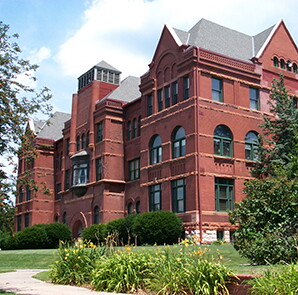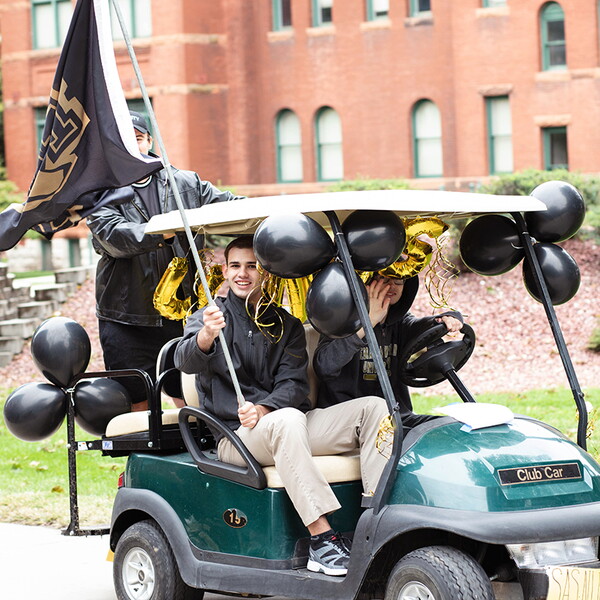Clinical Education Guidelines
The following guidelines delineate the role of an athletic training student. As a student in the Athletic Training Program at Nebraska Wesleyan University, you are expected to conduct yourself in accordance with these guidelines during any clinical experiences either on or off-campus.
- Definitions
- Direct Supervision- supervision of the athletic training student during clinical experience. The Clinical Preceptor must be physically present and have the ability to intervene on behalf of the athletic training student and the patient.
- Unsupervised Experience- An unsupervised clinical experience is one in which a program clinical instructor is NOT physically present to intervene on behalf of the athlete. STUDENTS MAY NOT BE LEFT UNSUPERVISED.
- The only exception to this is if the Preceptor leaves to use the rest room or other personal reasons. During the Preceptor’s absence, if something occurs, the coach is in charge and the students are only allowed to act as someone certified in first aid and CPR.
- Athletic Training Student Credential Requirements
- Each athletic training student must maintain current certification in Emergency Cardiac Care (eg. CPR/AED for the Professional Rescuer). This certification and update is offered annually by the ATP.
- Each athletic training student is covered by the University’s Liability Insurance Policy when being supervised as part of their Clinical Assignment.
- Orientation to the Clinical Site
- At least 1 week prior to beginning a new Clinical Assignment, students must contact the Preceptor at that site to schedule an orientation for that site. At a minimum the orientation must include:
- An explanation of the venue-specific Emergency Action Plans, the Blood-borne Pathogen Policy, any site-specific policies, and a tour of the facility.
- Students and Preceptors should also use this time to develop the student’s Clinical Experience Schedule.
- Preceptors should make expectations known at this time for student involvement and responsibilities.
- At least 1 week prior to beginning a new Clinical Assignment, students must contact the Preceptor at that site to schedule an orientation for that site. At a minimum the orientation must include:
- Athletic Training Clinical Experiences
- Direct client/patient care guided by a preceptor who is an athletic trainer of physician. Athletic training clinical experiences are used to verify students’ ability to meet the curricular content standards. When direct client/patient care opportunities are not available, simulation may be used for this verification.
- Acceptable Protocols; an athletic training student acting under the direct supervision of a certified athletic trainer or physician may:
- Provide all athletic training protocols that have been instructed, practiced and applied within a previous or concurrent academic course and/or instructed by a Clinical Preceptor.
- Write progress notes recording actions of care.
- Supplemental Clinical Experiences
- Learning opportunities supervised by health care providers other than athletic trainers or physicians.
- Athletic training students may gain experience from these health providers but cannot be graded on curricular content standards by these individuals.
- Learning opportunities supervised by health care providers other than athletic trainers or physicians.
- Supervision Allowing for the Development of an Independent Autonomous Individual
- As students progress through the program, they will acquire more knowledge, skills and abilities in each didactic class, practice and reinforce them in the weekly clinical course, and practice/implement them during the Clinical Assignment.
- Along with this, Preceptors allow students to integrate their knowledge, skills and abilities into the Clinical Assignment by providing supervision across a spectrum where students new to certain knowledge, skills and abilities are supervised more closely, but students who have advanced knowledge, skills and abilities are given more autonomy by the Preceptor and are allowed to develop their clinical-decision making skills, while appropriate supervision is maintained by the Preceptor.
- Clinical Education Hours
- Required Clinical Hours
- Each student is required to obtain a minimum number of hours per one credit hour of Clinical Education courses. Refer to the course syllabi for more details.
- These hours must be directly supervised by a Clinical Preceptor.
- A majority of all clinical educational experiences must be designated as athletic training clinical experiences
- Minimum and Maximum Hours
- Students must obtain a minimum of 45 hours per credit hour.
- Students may not exceed 200 hours as a maximum per credit hour.
- Verification of Clinical Hours
- Clinical hours must be verified by the assigned Clinical Preceptor.
- Recording Clinical Hours
- Students will record all clinical hours using ATrack.
- Students must document their patient contact for the respective day.
- Students must record the correct time, preceptor, location, event, and activity type for each hour entry. In addition, students must write a comment in each log entry explaining what they experienced that day. One word comments are not acceptable.
- Students must record their hours within seven days. Any student not submitting hours within that timeframe must contact the Clinical Education Coordinator to have the hours added to ATrack if the CEC feels the hours should be accepted.
- Required Clinical Hours
- Transportation
- All students must have access to reliable transportation in order to travel to off-campus clinical sites and are responsible for paying for their own gas, insurance, etc.
- Clinical Education Coordinator (CEC)
- Students should direct all questions related to Clinical Assignments to the CEC.
- Students should notify the CEC if any issues arise at their Clinical Site.



